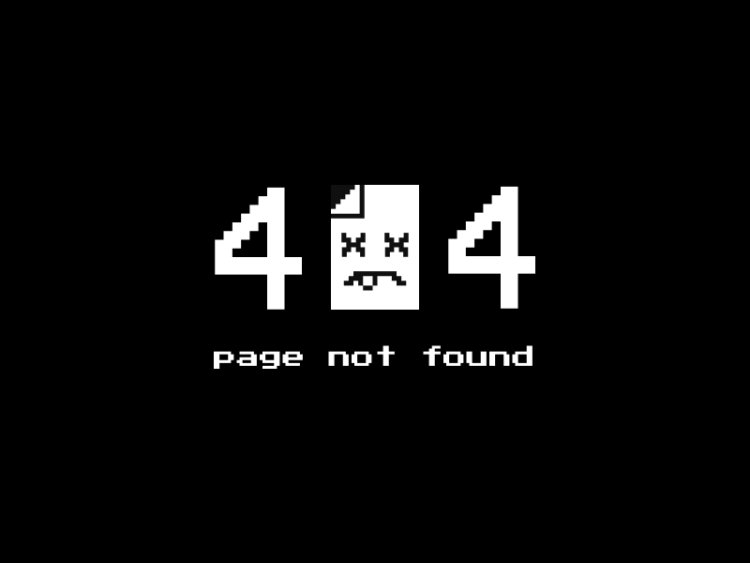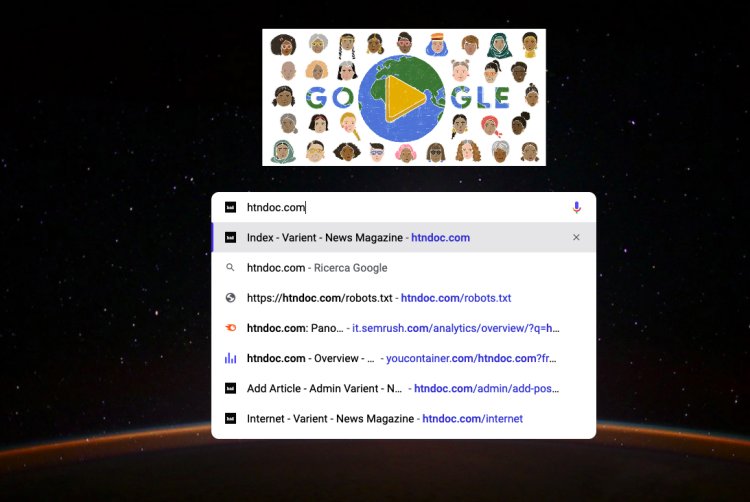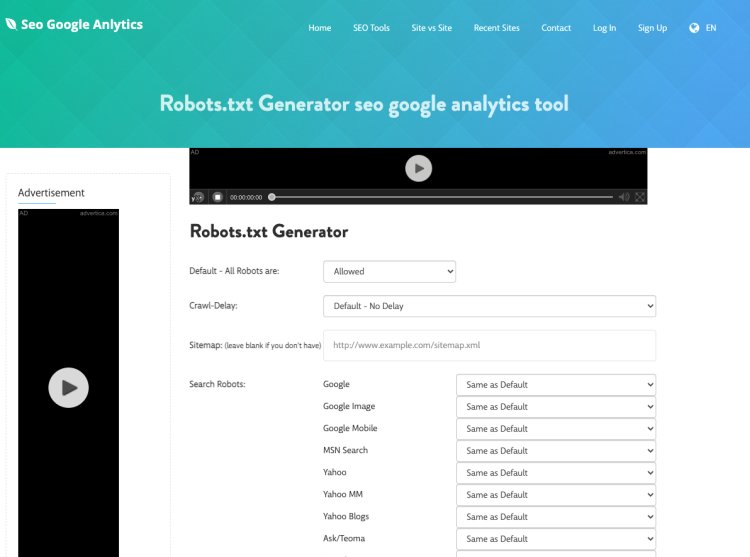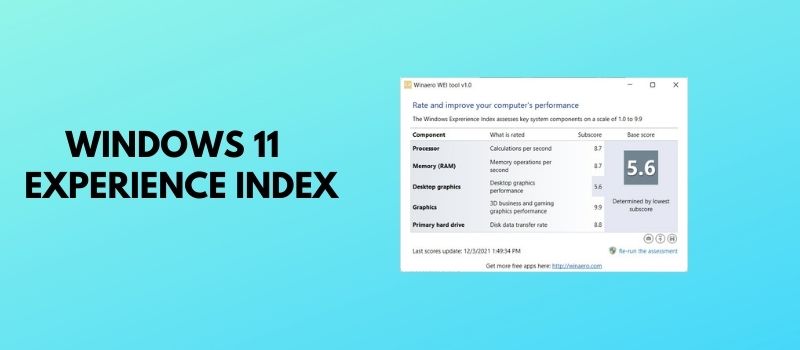How to fix error 404
How to fix error 404 - 404 error . This type of error, in particular, serves to notify the user that the page he sought no longer exists, for a series of reasons that do not depend on his behavior: just to name a couple of causes, the site may have been deactivated. , moved elsewhere, or the resource you are looking for may have been deleted.

You recently tried to access an Internet site that you had previously saved as a favorite, intending to visit it calmly and view the content published on it. The problem is that, no matter how much you've tried and tried to access it, the browser response has always been the same: 404 error . This type of error, in particular, serves to notify the user that the page he sought no longer exists, for a series of reasons that do not depend on his behavior: just to name a couple of causes, the site may have been deactivated. , moved elsewhere, or the resource you are looking for may have been deleted.
Anyway, that website could have been really useful to you, so now you are desperate for a tutorial that will explain to you in detail how to solve 404 error and how to access, or at least try to do so, the page that generates this type. of problem. Well, I am very happy to tell you that you have finally found the solution you were looking for: below, in fact, I intend to teach you to access the "cached" copy of a website, which makes it possible to view the old versions. Furthermore, it will be my responsibility to explain to you how to correct the 404 error, if the website in question is managed by you.
So what else are you waiting to get started? Carve out some free time for yourself, make yourself comfortable and carefully read everything I have to explain to you on this topic: I am sure that, at the end of this reading, you will be perfectly able to bypass the problem, applying the most appropriate solution. suited to your case. At this point, I just have to wish you good reading and good work!
Error 404: meaning

As I already mentioned at the beginning, the 404 error (or 404 Not Found ) is generated within the browser, the crawlers of the search engines (ie automatic robots that analyze the links within the various web pages) and by analytical software when a Web page, image, multimedia file or any other content you try to view by browsing the Net, no longer exist. Therefore, this type of error can be seen when trying to access a removed or moved website, when trying to view an "expired" link, when trying to download an image that is no longer present, and so on.
Technically, 404 is part of the HTTP status codes (the latter is the protocol that dominates Internet browsing): specifically, it belongs to the errors generated by the client (in jargon Client Error , or 4xx ), which they are shown when the request made by the latter cannot be satisfied, because it is syntactically incorrect or, as in this case, because it refers to an inaccessible resource.
To be precise, the 404 error refers to content that is not available but which, by definition, may be in the future; however, there is another HTTP error code inherent to a resource not found, 410 (or 410 Gone ), which is generated when a content is not available and will never be available again. In practice, the 410 error is far rarer than the 404 error.
How to bypass error 404
Now that you know perfectly what 404 error is, it's time to get down to business and figure out how to bypass it. The "trick", in this case, is to access an old version of the web page that generates the aforementioned error, known in jargon as a cached copy : almost all web pages indexed by search engines have at least one cached copy, generated completely automatically at more or less regular time intervals.
Below I intend to teach you to access the cached copy of an Internet site using the Google cache or the Wayback Machine portal .
Google cache

The first tool with which I want to teach you to solve the 404 error is the Google cache : if the site or resource in question is still indexed on the Mountain View search engine, in fact, there is a very good chance that they have a copy. related to an old version, which can be viewed practically anytime you want.
Before going ahead, however, I must make you a necessary clarification: the contents that can be viewed within the cached copy of a Web page may not be updated . Consequently, I advise you not to use this navigation method if you need “fresh” resources and instead contact the webmaster of the site in question (I'll talk about it later).
In any case, accessing the cached copy of a website is extremely simple: first of all, connected to the main Google page , type in the search box the name of the site you want to view, or the web address of the "disappeared" page , and press the Enter key .
Once this is done, take a look at the search results and identify the one most relevant to your case: observing it carefully, you should notice the presence of a small arrow pointing downwards at the URL of the page shown in the snippet (i.e. in the box which, for each search result, shows the clickable link to the page, the text link and its preview). All you have to do, once located, is to click on the down arrow and select the Copy Cache item from the options proposed: with a bit of luck, the next page will show you the content you were desperately looking for. Easy, right?
Wayback Machine
If you had no luck with the previous solution, you can give Wayback Machine an opportunity : this portal was created with the specific intent of collecting and archiving the old versions of Internet sites, giving the possibility to those who use it to make a real just jump back in time .
In particular, Wayback Machine allows you to consult multiple versions (or "snapshots") of the same website, choosing them based on the date they were saved: a godsend to solve 404 error when Google just fails!
So, without any further pleasantries, it's time to get to the practice: first, connected to the main page of Wayback Machine , paste the address of the web page that generates the 404 error in the text box and press the Enter button .
A few seconds later, you will be shown a sort of temporal archive, through which you can access one of the snapshots of the site in question: to do this, first click on the year you are interested in returning by selecting it from the top bar , and then choose with a click on the month and day using the calendar located just below ... and that's it! After a few moments, you will be shown the old version of the resource you were trying to access, exactly as it was on the chosen day.
Contact the webmaster
Have you had no luck with any of the solutions I reported to you earlier? Don't throw in the towel yet: as a last resort you can try to contact the webmaster of the website in question and ask him if it is possible to restore the page you were looking for or, at least, give you an explanation on how to access it (if it had been moved).
If you didn't already know, the webmaster of a website is the professional figure who takes care of it, managing all the implementation aspects connected to it (the structure of the pages, the scheme of the links, the plugins, the database and so on): in other words, the webmaster is the one who manages the functioning of the site and who, sometimes, corresponds to the owner of the same.
So, if you intend to approach this solution, first you need to access the main page that contains the link that generates the 404 error (e.g. aranzulla.it ), look for the Contacts item in the navigation menus attached to the pages of the site and use the proposed form, if present, to communicate with a manager; in some cases, you may need to use the Contact Webmaster or Feedback items , which are very often placed at the bottom of the website in question.
In any case, in addition to asking for explanations on how to access the lost resource , take care to specify, to those in charge, both the Web address that gives rise to the 404 error and an address (email, social, Skype and so on) at to contact you: if all goes well, you should receive an answer (and hopefully a solution) within no time.
How to fix 404 error on your site
If you have come this far, you have perfectly understood how to access all those pages that have disappeared and which generate 404 errors, however you have not benefited from what I have explained so far for a very simple reason: you are the one who manages the website. which generates 404 errors, so you are looking for a way to find and fix them.
The solution, as you surely already know, is theoretically simple: all you have to do is find and eliminate the references to the contents that no longer exist from the pages of your website. I know, finding such references can not be very easy (especially in the case where the site in question is sufficiently rich in content), however I would like to point out some solution appropriate to the case and which could simplify your work not a little.
Or is possible to check in web with tool free in this site Seo google analytics for see your file robots.txt .

Google Search Console
The first method to detect and correct 404 error on your website is to use Google Search Console : in this case, it is a series of tools designed to monitor the status of your website using the Google crawler , i.e. the robot capable of to analyze the pages and their structure in order to offer indexing within the search engine.
Before continuing, however, make sure that the robots.txt file of your website allows the pages to be crawled by the Google robot (in practice, check that disallow directives are limited to the bare essentials): if you need a hand in this sense, I invite you to consult the dedicated Google guide .
Once this is done, you can finally connect Google Search Console to your website: first, access the main page of the service offered by Google , click on the Login button located at the top right and enter the credentials of your Google account (if you do not have one , you can create one for free by following these instructions ).
At this point, you should be able to see the instructions for validating site ownership - generally speaking, what you need to do is download the verification file , upload it to your website (in the folder pointing to the domain root) and , once the operation is complete, validate everything by clicking on the I am not a robot box and pressing the Check button located at the bottom.
Once the ownership of the site has been validated, go back to the main page of Search Console, click on the newly added property, select the Scan and Sitemap items from the side navigation menu of the proposed page, press the Add / Test sitemap button and follow the instructions to make “Recognize” the sitemap on the Google console.
The bulk is practically done! Generally, the scan is completed after a few days, after which you will be able to view, in addition to the statistics on clicks and content, also the 404 errors generated by the site: to do this, after having accessed the main page of the Search Console for your site Web, click on the items Scan and Scan errors and, finally, select the Not found tab to view the complete list of 404s that have arisen from the various web pages.
XLS (Xenu's Link Sleuth)
If the solution offered by Google did not fully satisfy you, you can contact a local crawler such as Xenu's Link Sleuth or, more simply, Xenu : in this case, it is a free program for Windows (but can also be used on macOS via emulation ) in able to analyze the content of a website and report, among other things, the presence of broken links . Please note that when using Xenu, link analysis is performed using your Internet connection, which can take a long time to analyze.
Are you well aware of this and do you intend to continue anyway? Perfect! First of all, connected to the Xenu download page , click on the download link located inside it and wait for the file (eg XENU.zip ) to be downloaded to your computer.
Once this operation is complete, extract the archive in a folder of your choice (following these instructions , if you don't know how to do it), double-click the Setup.exe file contained within it and press the Next, I Agree , Next buttons twice, Install, Next and Finish to finalize the installation and start the program immediately.
At this point, press the Close button to close the initial suggestion, select the item Check URL ... from the File menu of the program, located at the top left, type the address to be analyzed in the text box located at the top, press the More button options… , put the check mark next to all the items proposed and press twice on the OK button to immediately start the scan.
Once the scan is finished, the main Xenu window will show both the 404 errors found and the pages containing the broken links associated with them.
CMS plugin
f you have created your website using a CMS , then the resolution of 404 errors generated by broken links could be much easier: in most cases, in fact, there are special plugins for website analysis, able to check for 404 errors, delete references or generate (where possible) automatic redirects to "stem" the damage and, in some cases, create error pages that are attractive to the user, which do not damage significantly the time spent or increase the bounce rate of the website.
Popular add-ons of this type include Yoast SEO and Broken Link Checker for WordPress and Link Checker for Joomla.

















